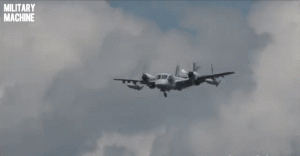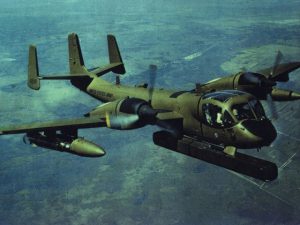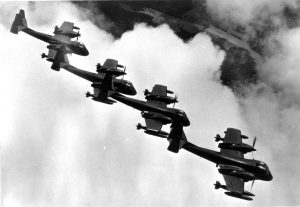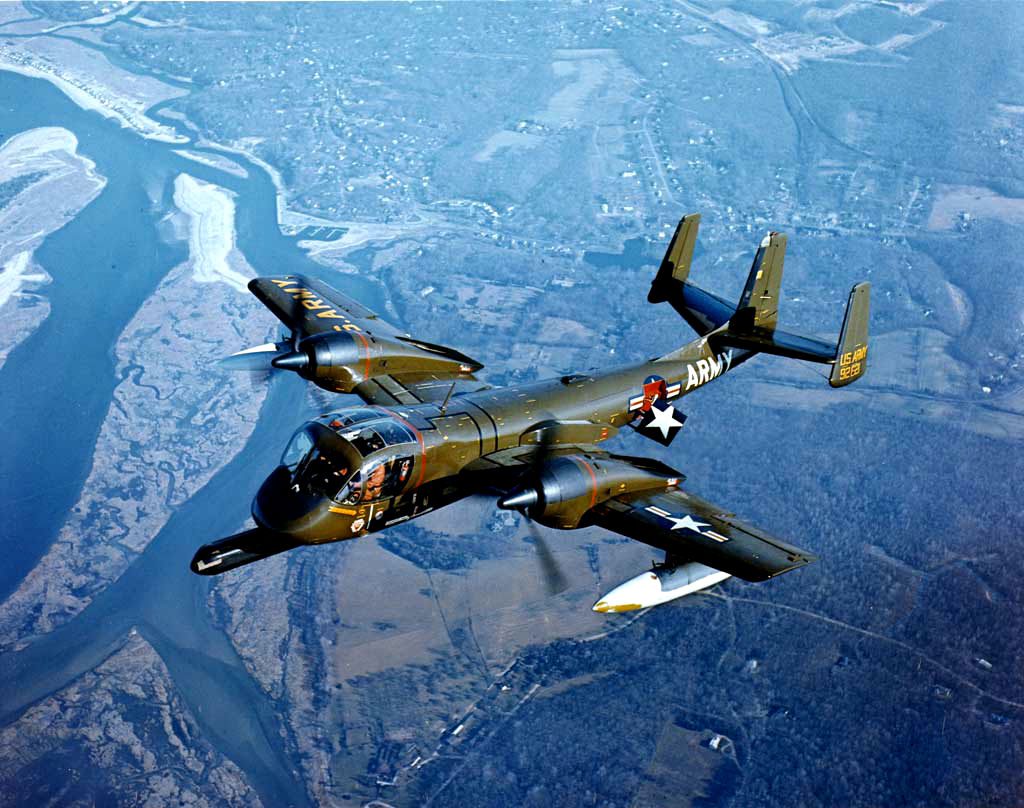OV-1 Mohawk Observation Aircraft
The bug-eyed OV-1 Mohawk was far more dangerous than the tame “observation aircraft” designation would suggest. As one of the rare fixed-wing aircraft operated by the US Army, Mohawks were busy hunting down guerillas in South Vietnam from the very first days of US involvement. Packing a pair of .50-caliber machine guns and several dozen 2.75-inch rockets, the OV-1 could leave a serious impression on fast moving targets when necessary, but that was just a bonus. The Mohawk’s primary and most lethal weapon was its long-range radio.
Cutting Through The Fog Of War:
In 21st century warfare, near-complete situational awareness on the battlefield is often taken for granted. Thanks to our elaborate modern network of integrated SIGNIT sensors, drones, satellites and tactical intranets, local commanders are usually drowning in real-time intelligence. In the 1960s though, gathering tactical intelligence was much more complicated. Especially in the impenetrable jungles of Southeast Asia.

Aerial reconnaissance back then required the Air Force to task a camera-equipped aircraft to conduct a high-speed fly over, return to base, develop the film, analyze the intel and then send relevant details to ground troops. The slow and ugly Mohawk cut through that fog of war and changed the whole tactical situation. Orbiting above friendly forces for hours, the dedicated observer onboard the OV-1 gathered visual and electronic intelligence and fed everything they learned straight to the on scene Army commander.

Avionics:
These aircraft had more than just a bird’s-eye view of the battlefield though. Side-Looking Airborne Radars (SLAR) were added from the OV-1B variant onward, giving the Mohawk an almost God’s eye-view from above. The SLAR was accurate enough to scan large patches of dense jungle and pick out individual enemy soldiers no matter how well camouflaged. This powerful radar could even identify a moving vehicle from 45 kilometers away. The OV-1D variant combined the SLAR with a large-aperture infrared scope for even better target marking at night.

Make It Rain (Steel):
Quite often, the fire support spotter in the plane wouldn’t even have to bother local ground troops with the enemy’s location. If the opposing force was too large to destroy with the Mohawk’s weapons, a radio call to the nearest artillery unit could quickly resolve the problem. Due to inter-service rivalry with the Air Force though, the OV-1’s were disarmed in 1967 and forced to concentrate on fire support and intelligence operations for the rest of the war. The Army did have some success replacing the ordinance with air-droppable supply pods to help resupply small units in emergency situations.

Armor:
The Mohawk was also one of only a handful of aircraft worldwide equipped with armor plating to protect against small-arms fire. Since the OV-1 usually operated from unimproved, far-forward airstrips under the command of a local ground unit, they could scramble in minutes to any call for help. Of course, this incredible accessibility came at a price. Of approximately 300 Mohawk’s deployed to Vietnam throughout the war, enemy fire claimed 27 and another 36 also lost in non-combat operation accidents.
After the war, the OV-1 Mohawk saw extensive service patrolling the DMZ in Korea and a final hurrah coordinating fire support in the Persian Gulf War before the fleet was retired in 1996.
See OV-1 Mohawk Specifications
| Crew: Two: pilot, observer |
| Length: 41 ft 0 in (12.50 m) |
| Wingspan: 48 ft 0 in (14.63 m) |
| Height: 12 ft 8 in (3.86 m) |
| Wing Area: 360 ft² (33.45 m²) |
| Empty Weight: 12,054 lb (5,467 kg) |
| Loaded Weight: 15,544 lb (7,051 kg) (Normal take-off weight, IR mission) |
| Max. Takeoff Weight: 18,109 lb (8,214 kg) (SLAR mission) |
| Powerplant: 2 × Lycoming T53-L-701 turboprops, 1,400 shp (1,044 kW) each |
| Never Exceed Speed: 450 mph (390 knots, 724 km/h) |
| Maximum Speed: 305 mph (265 knots, 491 km/h) at 10,000 ft (3,050 m) (IR mission) |
| Cruise Speed: 207 mph (180 knots, 334 km/h) (econ cruise) |
| Stall Speed: 84 mph (73 knots, 135 km/h) |
| Range: 944 mi (820 nmi, 1,520 km) (also SLAR mission) |
| Service Ceiling: 25,000 ft (7,620 m) |
| Rate of Climb: 3,450 ft/min (17.5 m/s) |

